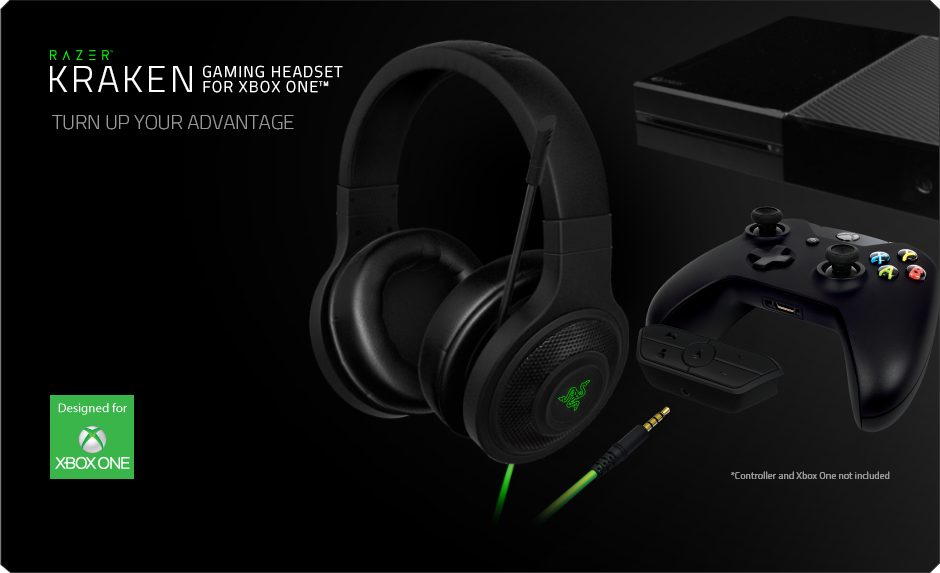2020. 2. 10. 18:30ㆍ카테고리 없음
Be sure to visit for all the latest comprehensive hands-on reviews and best-of roundups. Note that if you click on one of these links to buy the product, IGN may get a share of the sale. For more, read our. Razer makes a few different gaming headsets, but its Kraken line is a wired, midrange option geared toward esports fans. The new Kraken Tournament Edition is the first to feature Razer’s new THX Spatial Audio, and it's cross-platform as well. At $100 it's relatively affordable as far as headsets go, especially coming from Razer.Razer Kraken Tournament Edition – Design and FeaturesThe Kraken Tournament Edition doesn’t look much different from the.
It’s a fairly large headset, with big round ear cups to house its 50mm drivers, as well as thick memory foam ear pads. The microphone is retractable, which is convenient on the occasions you just want to listen to music, and the braided cable comes with inline volume controls and a mute toggle for the mic. The black version of the headset is decently inconspicuous, apart from its size, but the neon green set I tested certainly stands out from the crowd. The headband frame is made from aluminum, with a plastic ear cups to keep it nice and light. The biggest change in this year’s Tournament Edition is the addition of a USB amplifier, which offers built-in volume control, mic mute, balance controls (for balancing in-game audio with in-game chat),. This feature, Razer claims, creates more realistic directional sound to help you determine where certain noises are coming from.
(I’ll come back to that in a bit.) If you don’t need the buttons on the amp, or want to connect to a non-USB device, you can connect the headset directly to a device using its attached 3.5mm connector. The amp is, essentially, the main difference between the Kraken Tournament Edition and the Kraken Pro V2. You’ll pay an extra $20 for this feature, with the Tournament Edition costing $100. Razer Kraken Tournament Edition – SoftwareLike all of Razer’s peripherals, many of the Kraken’s features are enabled via Razer’s Synapse software. After installing and logging in with your Razer account (which is required), you’ll be able to tweak the headset’s sound with an equalizer, sound “enhancement” features like normalization and “voice clarity,” and adjust the microphone’s sensitivity and noise reduction. This only seems to work when plugged in with the USB amp, however, though that shouldn’t be an annoyance for most people.
Razer’s new Synapse 3.0 doesn’t provide the greatest user experience, with very little information about what these features actually do. For example, both the “Ambient Noise Reduction” and “Vocal Clarity” checkboxes say that they filter out ambient or unwanted noise, but don’t elaborate on the difference between the two settings. Furthermore, I experienced a few instances of the application hanging during usage—in some cases, necessitating a full reboot before the program window would even appear. None of the features particularly appealed to me, so it didn’t make much of a difference in this case, but if you want to make use of them, you may have to fight with Razer’s software a little bit. Razer Kraken Tournament Edition – GamingGaming with the Kraken Tournament Edition was, to put it mildly, a mixed bag.
Let’s start with the good: this headset is extremely comfortable. It’s very lightweight, so I never felt like it was digging into my skull or clamping too hard on my ears, which—let me tell you—is not a given with $100+ over-ear headphones. Apart from my ears getting a tad warm, I had no problem wearing this headset for long periods of time—even with glasses on, which is quite a feat. Unfortunately, my love for the Kraken ended there. The sound quality leaves a lot to be desired, especially when I compared it with similarly-priced competitors like the in side-by-side testing. In my experience The Kraken just sounded muddy, with a bloated low end and stilted treble. In quieter games like Overwatch, this wasn’t a huge annoyance, but when I listened to music—or played a game with lots of big sounds, like Doom—the lack of clarity made everything sound like a big mess.
The HyperX Cloud II, on the other hand, was able to keep sound effects clear and distinct from the in-your-face soundtrack. The amplifier’s THX Spatial Audio didn’t help, even when “calibrated” through the software. While Razer’s new spatial audio is more subtle than some virtual surround features—many of which can be overpoweringly terrible—it still sounded unnatural to me.


Razer Headphones Drivers

Razor Cracking Headphones
Certain audio cues (like my character’s footsteps) becoming noticeably louder, while other things around me sounded quieter. I found it far easier to be aware of my surroundings with the THX feature turned off. The USB amp is still useful without it, but as the big banner feature of the Tournament Edition, Spatial Audio was a disappointment. The microphone was similarly inferior—it worked well enough for chatting, but compared to one on the superior Cloud II, my voice sounded thin and hollow. If comfort is paramount and you play games with the music turned down (or off), then I suppose the Kraken Tournament Edition would do the job. But if you care at all about sound quality, you can get a much better headset at this price.
Razer Kraken Headphones
Razer Kraken Tournament Edition Purchasing GuideThe Razer Kraken Tournament Edition can be found for $99 at most major retailers.